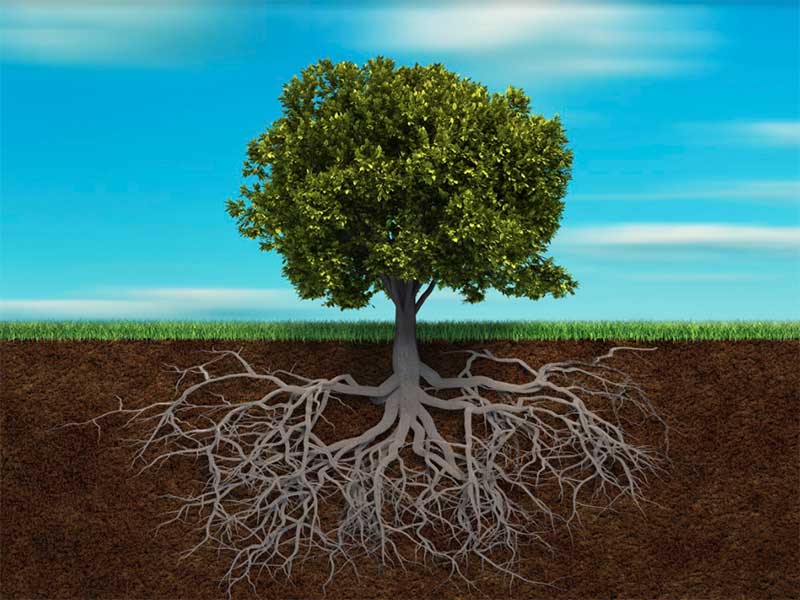Legal Developments in Tree Law | Guest Blog by California Attorney

Legal Developments in Tree Law
With the abundance of water we had this past winter, trees in various regions are growing larger and larger! Although this is positive news in a biological standpoint, this also means that there is an increasing amount of property disputes as residential trees are affecting neighbors. Check out the article below written by Laurel C. Champion to find out more about the recent developments in Tree Law! Laurel is an expert in the business torts and real estate litigation field. She has represented residential and commercial landowners, businesses, buyers and sellers, brokers and agents, and many other parties.

Recent Developments in California Tree Law
With the unseasonably wet winter we just had, many of the area’s large trees are experiencing greater than usual spring and summer growth, weighing down supporting limbs and growing to new heights and lengths. As a result, real property disputes involving tree issues are on the rise, making now a good time for an update on this area of law.
Two fairly recent decisions have come down from the California Courts of Appeal concerning issues pertaining to recoverable damages under trespass cases relating to tree/timber damages. The first, Salazar v. Matejcek, 245 Cal.App.4th 634, was handed down on March 10, 2016 by the First Appellate District; the second is Fulle v. Kanani, 7 Cal.App.5th 1305, handed down by the Second District on January 31, 2017.
In Salazar, the Appellate Court affirmed a trial court’s award of damages associated with the defendant’s encroachment on the plaintiff’s neighboring parcel, which was a 10-acre piece of rural property. In addition, the Court awarded treble damages for defendant’s removal of timber and issued a mandatory injunction requiring him to restore plaintiff’s land to its pre-trespass condition. What is notable about Salazar is that the plaintiff’s property was essentially undeveloped. There was a rustic cabin on the ten acres, but otherwise the property was unimproved. The property was heavily forested and incredibly rural (up in Mendocino County), and the area affected was approximately 2/3 of one acre. Nonetheless, the court ordered tree restoration to the 2/3 acre section and awarded plaintiff $67,500 as the cost of the tree remediation, the amount of which plaintiff established by expert testimony. The Court found that defendant’s conduct was willful and malicious, and it trebled the $67,500 award of compensatory damages pursuant to Civil Code § 3343 and Code of Civil Procedure § 733, resulting in a significantly higher award than one might expect for a case like this.
The Appellate Court affirmed the trial court’s findings, despite defendant’s argument on appeal that the $67,500 amount in compensatory damages was unreasonable in light of the fact that the entire 10-acre parcel was worth only $75,000. The Court explained that while, generally speaking, a tort plaintiff will recover the lesser of the diminution in property value or cost to repair, and admittedly in this case there was no evidence that the property had suffered any diminution in value, the Court felt that the plaintiff had satisfied the “personal reason exception” to the foregoing rule, which allows a plaintiff to recover the cost of restoring the property to its condition prior to the injury (even if these costs exceed diminution value) if there is a personal reason for the restoration. Because trial testimony showed that plaintiff’s family had used the property as a place to vacation for many years and the trees were valuable for aesthetic reasons, the Appellate Court upheld the trial court’s decision.
The Appellate Court also noted that the trebling of damages by the trial court was appropriate. Defendant challenged the finding that it acted willfully or maliciously, but the Appellate Court explained that the intent required is the intent to vex, harass, annoy, or injure the plaintiff. Whether such intent exists is a question of fact for the trial court, and the record did support a finding that defendant acted with deliberate indifference to the rights of plaintiffs, as there was significant testimony that he deliberately ignored signs of property lines, boundaries, etc. The Appellate Court thus held the trial court did not abuse its discretion in trebling the damage award and affirmed the judgment in all respects.
In the second case, Fulle v. Kanani, the defendant hired workers to cut down the limbs and branches of six trees located on the plaintiff’s property. The plaintiff sued for trespass and negligence and sought damages for injury to the trees, restoration costs, and damages for annoyance and discomfort. She too sought the enhanced damages under Civil Code § 3346(a). In this case, the trial court trebled plaintiff’s economic damages but declined to apply the multiplier to her damages for annoyance and discomfort. When she appealed, the Appellate Court concluded that annoyance and discomfort damages are subject to the statutory damage multiplier for trespass to timber, and it reversed and remanded on that basis.
In Fulle, the plaintiff testified that the trees provided her home with aesthetic benefits, shade, and privacy. The trees partially blocked the defendant’s view of the San Fernando Valley, one of the alleged motivations for cutting them back. Plaintiff provided testimony that the eucalyptus trees were irreparably damaged and needed to be moved and replaced, which would require building a retaining wall to shore up the hillside. Her damages calculation included tree damage, loss of aesthetic benefits, the cost of removing and replacing the trees, building a retaining wall, and after care of the trees. She also sought annoyance and discomfort damages, costs of renting another house during construction, and interest.
The jury awarded $27,500 for damage to the trees, $20,000 for the cost of repairing the harm, and $30,000 for past non-economic loss including annoyance and discomfort, loss of enjoyment of the property, inconvenience, and emotional distress.
The Appellate Court noted that it was handling an issue of first impression (an issue the court had not encountered or decided previously) – i.e., whether annoyance and discomfort damages resulting from injuries to trees may be doubled or trebled under the timber trespass statutes, Civil Code § 3346, and Code of Civil Procedure § 733. After a lengthy analysis of legislative history and statutory interpretation, the Court concluded that annoyance and discomfort damages resulting from tortious injuries to timber or trees are subject to the damages multiplier under the foregoing statutes. The Court further held that where a finding is made that the conduct is willful and malicious, the trial court must award double damages and has the discretion, pursuant to those statutes, to award treble damages (as in Salazer) for annoyance and discomfort, along with the other compensatory damages.
These cases up the stakes in litigation involving trespass to timber, which are traditionally cases that do not generally involve high damage figures. Given this, when faced with a tree issue, before you take any action, it is now more important than ever to consult a reputable attorney. Conversely, if you feel a tree on your property has been affected or damaged by someone else’s actions, what may not have been worth pursuing in the past (given the high costs of litigation) may now be worth taking a closer look at.
[See our last attorney guest blog Pre-Listing Inspections by David Hamerslough]
Northern California Home Inspection
Here at HomeGuard, we offer termite, home, and roof inspections along with NHD reports. For more information, call us at 855-331-1900 or click here to fill out a contact form.




